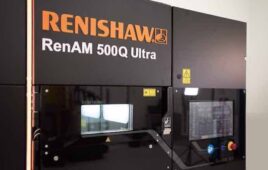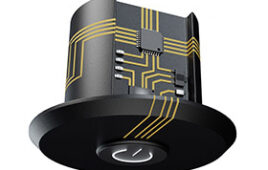In films such as The Terminator, Nemesis, and American Cyborg, alien robots able to self-generate damaged limbs, skulls, and even brains were no big deal.
These sci-fi characters regenerated their bodies without a second thought. With the original Terminator a scant 30 years in the past, this science fiction is becoming a human reality.
Cyborgian surgical implants that resemble something from The Terminator are now a reality thanks to 3D-printed titanium. The rapidly expanding technologies of biomedical engineering and medical 3D printing have been used to correct both inherited and caused deformities to the body’s most sensitive areas: the skull and internal organs, bones, and tendons.
Vertebrae, cranium, and mandible—as well as acetabulum (hip bone), tibial, and femoral—replacements have all been performed using implants created with additive manufacturing.
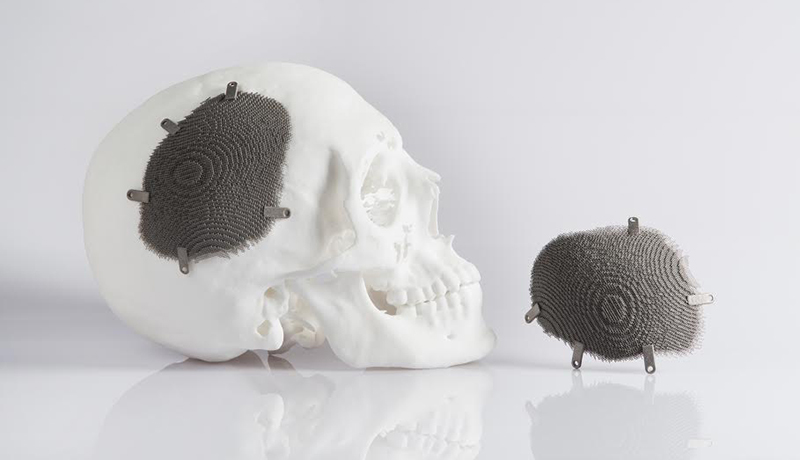
A Novax DMA cranial implant. Courtesy Novax DMA.
Two innovative companies producing these surgical implants are Buenos Aires–based Novax DMA and CEIT Biomedical Engineering from Bratislava, Slovakia.
A relatively new organization, CEIT Biomedical Engineering focuses on creating custom surgical implants 3D printed in titanium—as does Novax’s Protolab 3D division. Although Novax has been in business since 1993, it has just begun working with 3D-printed titanium in the past couple of years.
“The possibility of directly printing the implants we design has many different applications and advantages,” says Novax DMA founder Dr. Daniel Fiz. “Until now, we used additive technology only during the design process, and it was very useful. But we couldn’t obtain the final piece to implant in the patient. In implant-design companies like ours, I can easily foresee that titanium 3D printers will replace conventional machines.”
CEIT Biomedical Engineering co-owner Radovan Hudak, PhD, agrees: “The use of subtractive methods using CNC machines was very complicated—it is impossible to make the thin walls needed to create porous structures in different shapes using traditional milling machines. With additive manufacturing, you can create completely free-form shapes and surfaces.”
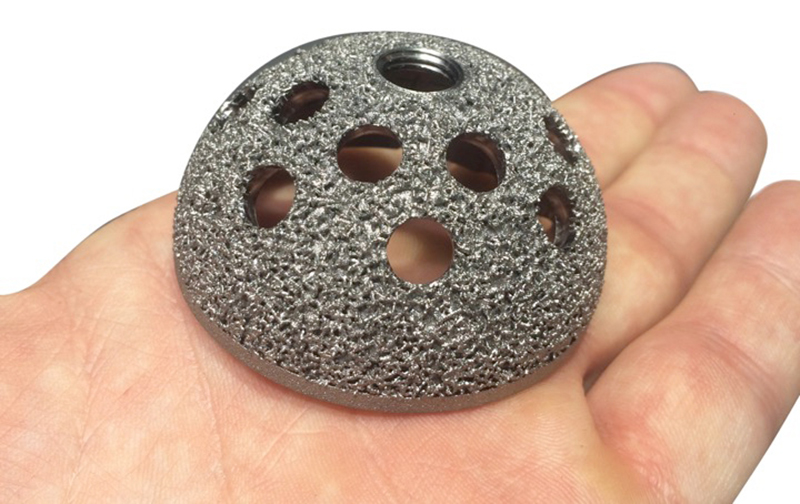
This acetabular hip-cup implant shows the porous design possible using Autodesk Within Medical.
Those porous structures are key to surgical implants’ success, as osseointegration is a particularly challenging area of medical-implant technology. All bones are created differently, with varying levels of density depending on whether a bone is weight bearing or freestanding, so creating implants the body will accept and integrate has been a hurdle.
“In nature, our bones don’t have the same porosity in places that bear weight and those that don’t,” Fiz says. “Biologically, bone cells deposit different material and mineral densities in different parts depending on the structural needs of the body. I believe there are only two ways to create implants with a porous structure to enable osseointegration. One is to apply a porous surface onto the implant through various methods like a plasma spray or coating, and the other is to use Autodesk Within Medical.
“What this software allows us to do is clearly design the porosity of bone implants and essentially create any complex structure that you want,” Fiz continues. “With traditional coating methods, it was very difficult to control the porosity, and it was a challenge to create interconnections between the pores. Now, we can create porous interconnections, regulate the dimensions of each pore, and regulate the density of the pores in different parts of the implant—meaning we can create an implant which is much closer to the real thing.”
Like Fiz, Hudak and his team can design lattice structures that are more lightweight, provide improved osseointegration, and last longer than other implants. “Designing different-shaped implants was so complicated only as recently as three years ago, but now it is a question not whether we can produce a shape, but just how quickly we can scale up production,” Hudak says.

A 3D model of the CEIT maxillofacial-implant patient’s medical scans. Courtesy CEIT Biomedical Engineering.
One of CEIT Biomedical Engineering’s most impressive successes was an implant for a patient with defects in 34 percent of his cranium due to a crippling fall. After converting the patient’s medical scans to a 3D model, the team 3D printed a titanium-alloy implant, which surgeons affixed to the patient’s skull with 21 screws.
Within three months, the patient showed marked improvement in both communication and mobility after nine years in a wheelchair; he now lives a completely independent life. Yet another successful implant (pictured) was an 86 percent restoration of maxillofacial bone tissue.
And Novax replaced three spinal vertebrae S1 in a patient with a rare chondofibroma tumor. “The surgery was very successful,” Fiz says. “The prototype models printed in plastic, the virtual reflections, and the implant design were perfect.”
Medical 3D printing has enabled a wide variety of life-saving and life-improving implants. Surgeons in Brazil implanted 3D-printed titanium plates into the skull of a 23-year-old woman who had split the bones across the right side of her head. A 64-year-old cancer patient received a 3D-printed jaw. And surgeons implanted a titanium ribcage and sternum into a Spanish cancer patient.
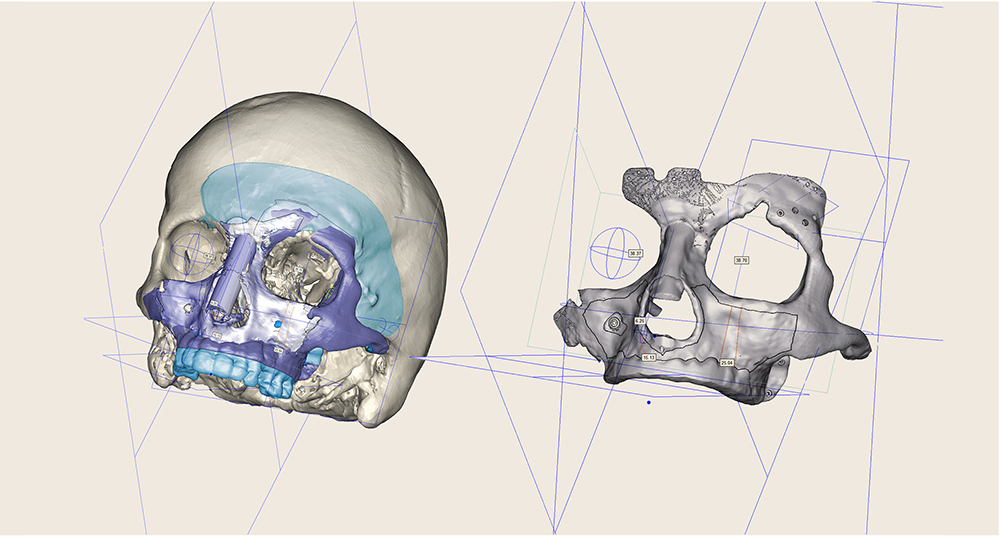
The CEIT maxillofacial implant takes shape in the 3D model. Courtesy CEIT Biomedical Engineering.
So what lies ahead for additive manufacturing, biomedical engineering, and medical implants? “I am convinced that the next step is the incorporation of the 4D printing concept in our field,” Fiz says. “It will allow us to use a minimally invasive approach to implant simplified geometry pieces that, once in their place and under stimuli, would change into a final complex geometry. In the longer term, I can see implants that will be able to modify their geometry depending on the body’s mechanical demands.”
“The world is changing quickly with new materials, techniques, and machines being developed all the time,” Hudak says. “This is a truly exciting time for medical implant development and innovation.”
This blog originally appeared on lineshapespace.com/3d-printed-titanium.
Filed Under: 3D printing • additive • stereolithography, Materials • advanced

